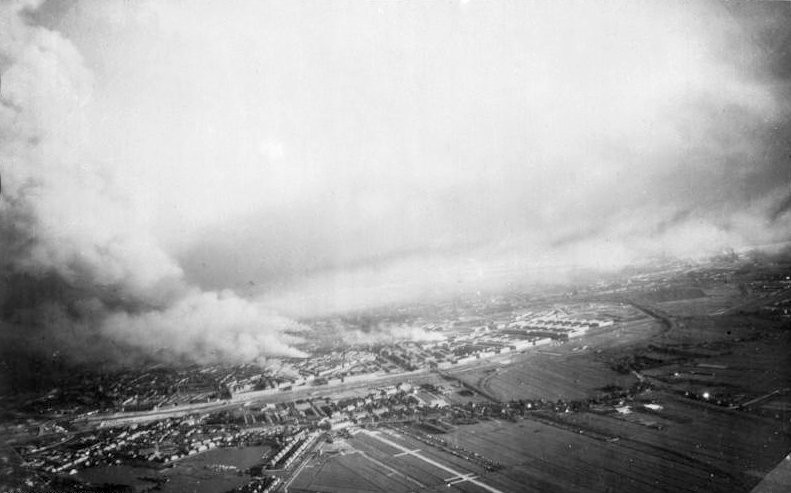German conquest of most of continental Europe was accompanied with ruthless application of air power as a means of terrorizing the attacked nations into submission. Wieluń, Frampol, and Warsaw in Poland, Rotterdam in the Netherlands, London and Coventry in Britain, Beograd in Yugoslavia, or Leningrad and Stalingrad in the Soviet Union were among numerous cities and towns attacked by the dreaded Luftwaffe without distinguishing between civilian and military targets. British Bomber Command responded in kind, steadily increasing the number of bombers taking off each night to strike at German cities. 1942 the American 8th Air Force joined in, attacking at daytime. Apart from destroying German munitions factories, railroad connections, and key military installations, the aim was to disrupt the production by forcing the workers to hide in air raid shelters, destroy their homes, and this way to break their spirit. Although the air campaign did not manage to paralyze German war production or to break the morale of the people, it put an enormous strain on German war machine. At a huge cost in manpower and resources, massive air raid shelters and anti-aircraft emplacements were erected across Germany. Many factories were evacuated to facilities burrowed underground, mostly by prisoners of concentration camps. The Germans, unable to conduct a similar campaign due to Allied supremacy in the air, developed new so-called Vergeltungswaffen (revenge weapons) – V-1 cruise missiles and V-2 ballistic rockets, to indiscriminately attack cities in Britain and, later on, liberated cities on the Continent.
